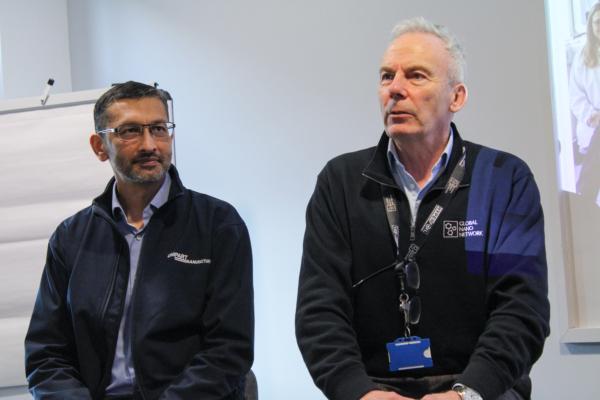By Unipart Manufacturing Senior Business Development Manager Bhavik Shah

The UK doesn’t struggle to innovate, but it does struggle to commercialise new technology to compete on the global stage.
That was an overarching message discussed at a panel to which I was invited for Clean Futures, a government-backed programme to support the West Midlands transport sector to be at the heart of the Green Industrial Revolution.
Hosted at Coventry University, the event brought together academics, innovators, small- to medium-sized business leaders, manufacturing experts, and government-supported organisation leads with a clear priority to understand how we can collaborate better to successfully scale new technology.
Unipart has been working with partners for more than a decade on the automotive sector’s transition from internal combustion engines to clean energy, and it was a pleasure to share our story alongside Global Nano Network Chief Operating Officer Les Gill.
The panel was moderated by Marcos Kauffman from The Institute for Advanced Manufacturing and Engineering, a unique collaboration between Unipart and Coventry University which underscored the importance of collaboration. The Institute has been, and remains, crucial to Unipart’s decarbonisation journey.
Here are five points innovators and organisations should consider when collaborating to identify and scale new technology:
- Bridging the innovation-commercialisation gap
There is a disconnect between innovation and commercialisation in the UK. Small enterprises often struggle to take their innovative technologies from the lab to the market. Collaboration between manufacturers, who have the production capabilities, and funding bodies, who can provide the necessary resources, is crucial to bridge this gap and support the commercialisation process. - Sharing risk and building trust
Developing and scaling new technologies involves significant risk and investment. Small enterprises, in particular, may be hesitant to share their intellectual property and know-how. Collaboration allows for risk-sharing and the building of trust between the different stakeholders, enabling the free flow of information and the co-development of solutions. - Accessing complementary capabilities and resources
Manufacturers, funding bodies, and small enterprises each bring unique capabilities and resources to the table. Collaboration allows them to leverage these strengths and create synergies. For example, manufacturers can provide production expertise, while small enterprises can contribute innovative technologies and ideas. - Navigating the ‘valley of death’
The ‘valley of death’ is the challenging period between proving a technology in the lab and securing the funding and resources to commercialise it. Collaboration between the different stakeholders can help companies navigate the valley, providing access to the necessary infrastructure, expertise, and funding to scale their technologies. - Developing a supportive ecosystem
Scaling new technologies requires a well-functioning ecosystem with strong links between various stakeholders. Collaboration between manufacturers, funding bodies, and small enterprises helps to create this ecosystem, fostering knowledge-sharing, joint problem-solving, and the development of a shared vision for the future.
The panel was followed by a presentation from Phil Peak at Coventry and Warwickshire Growth Hub who have a key focus of supporting scale-up businesses with the potential for high-growth.
It was reassuring to see the right people in the room with a clear goal to realise the significant economic impact the West Midlands can make.